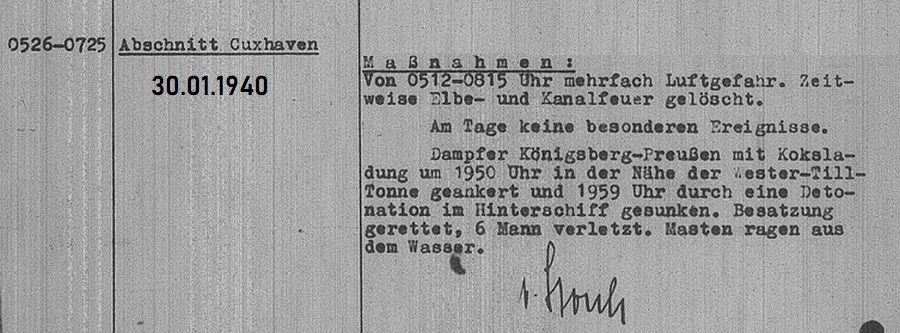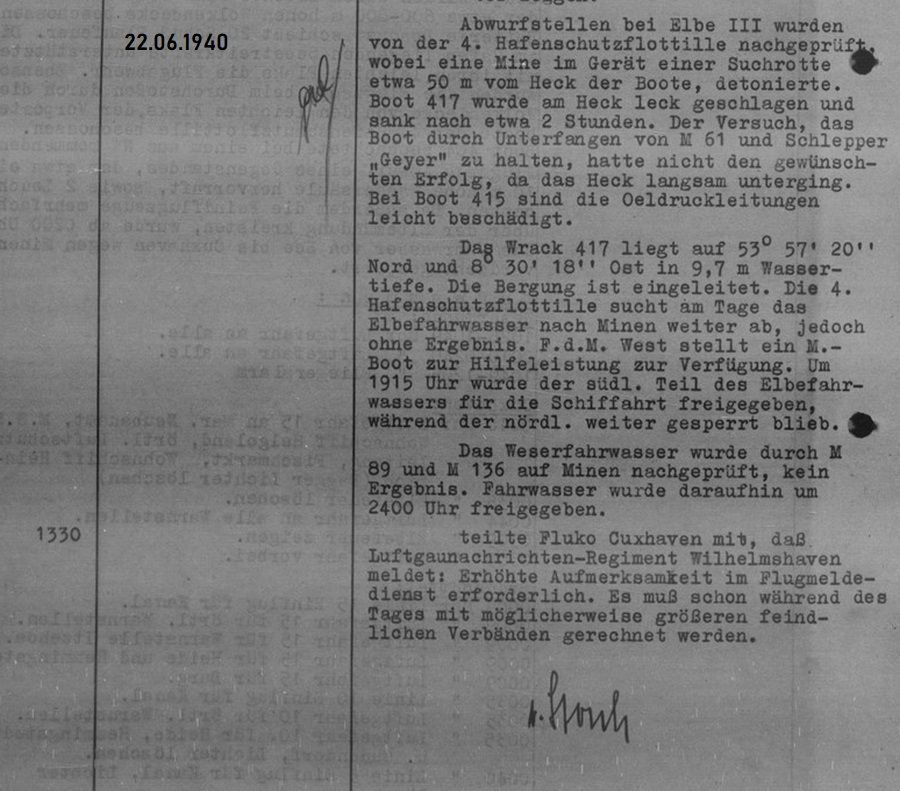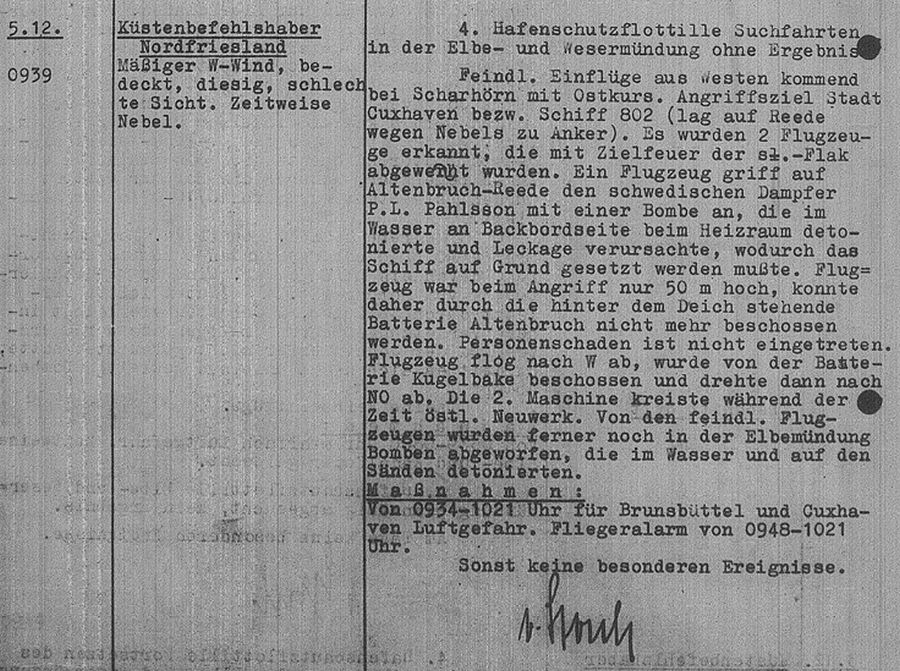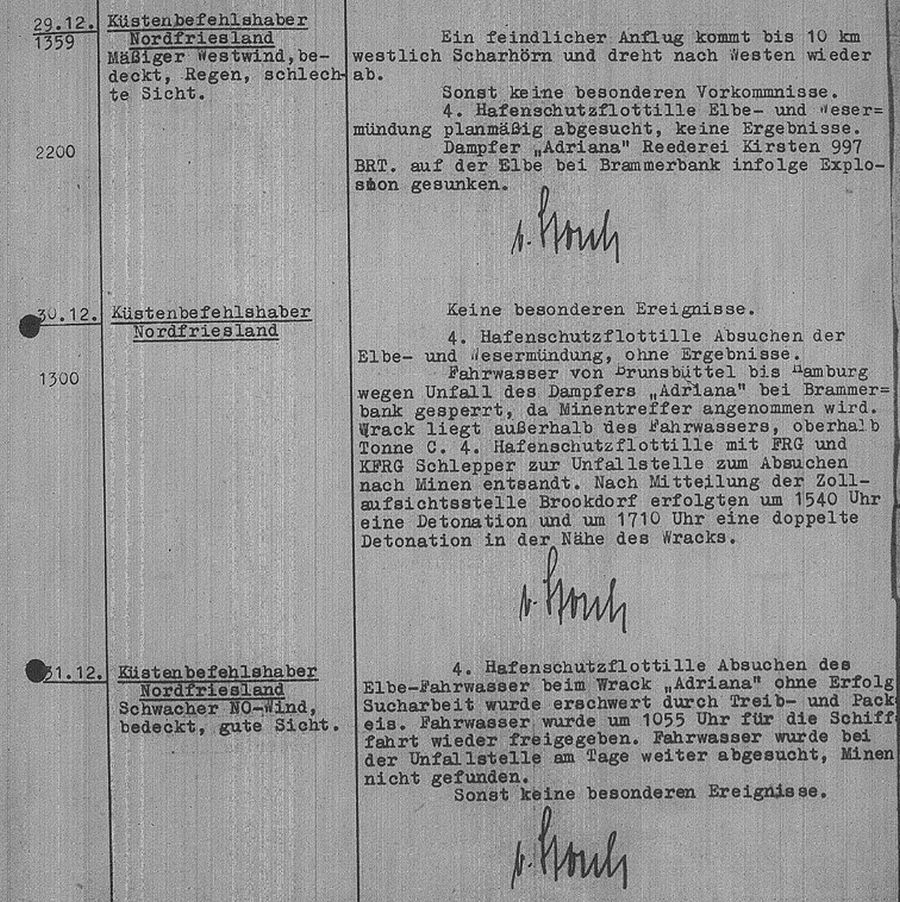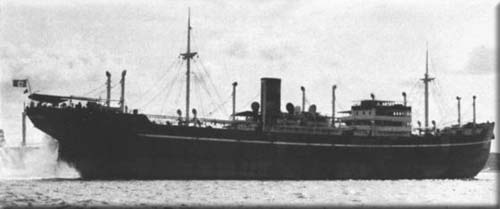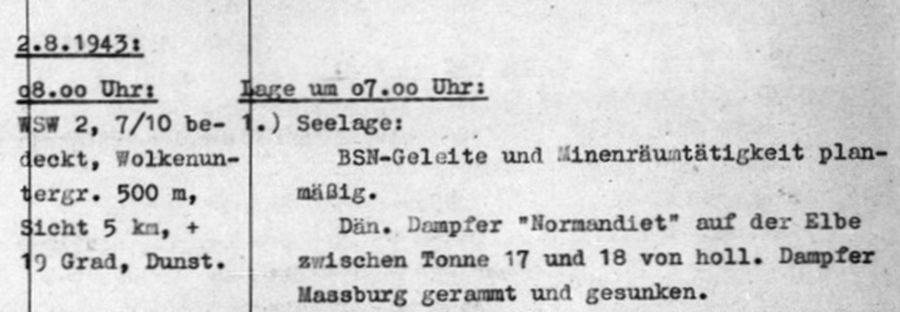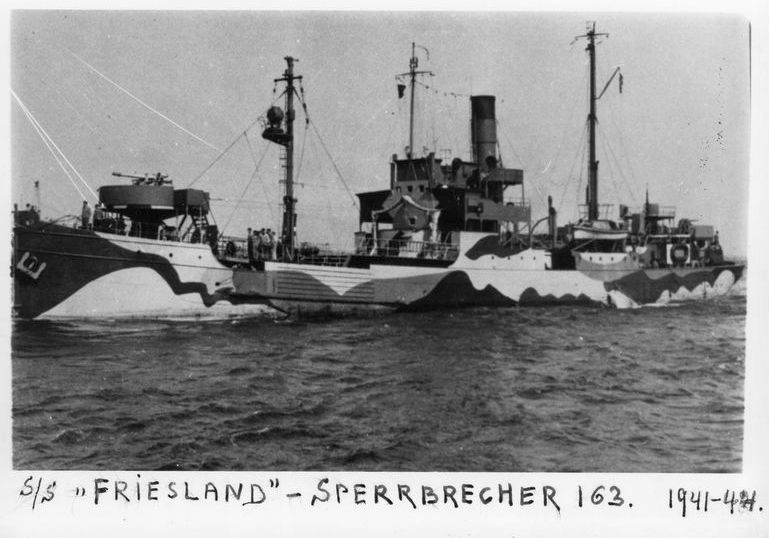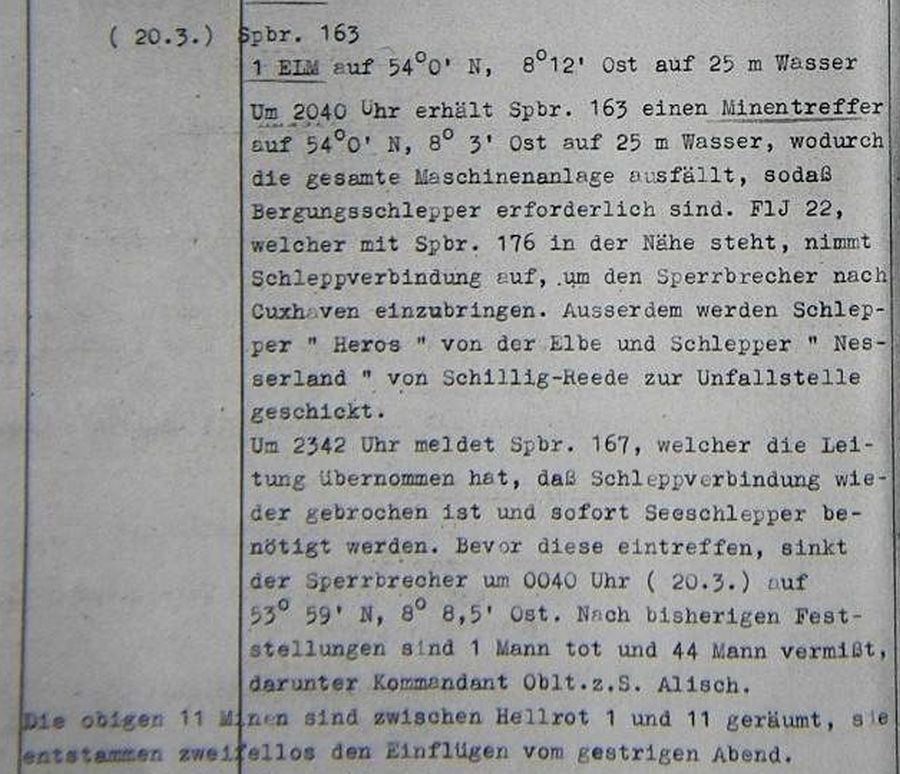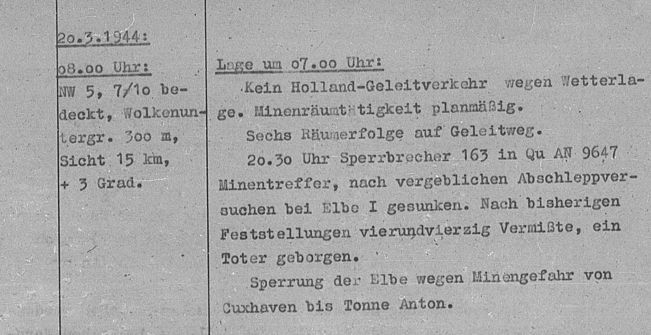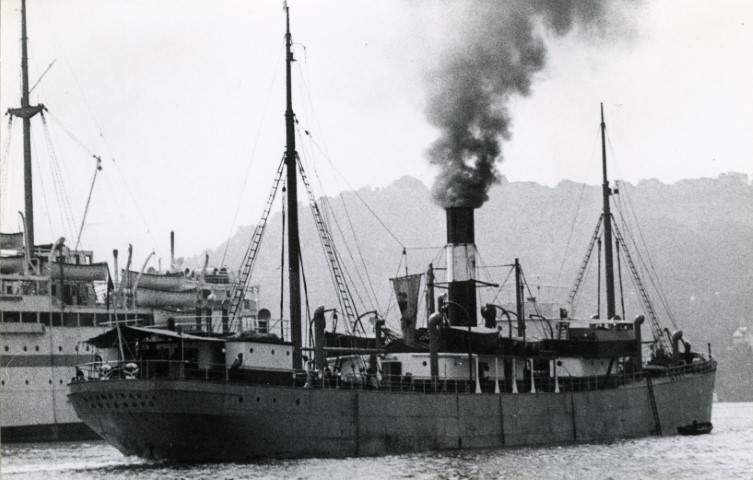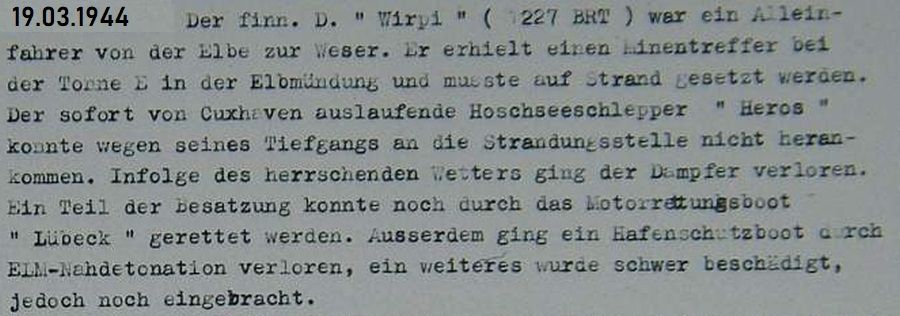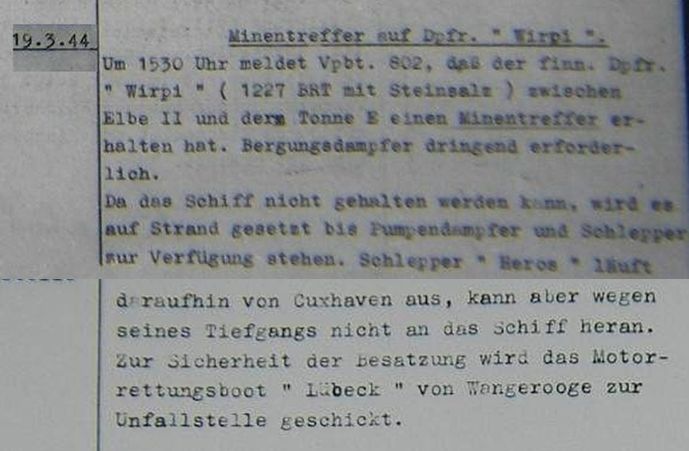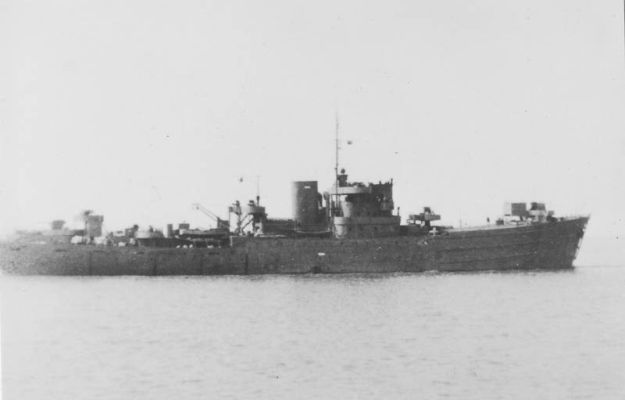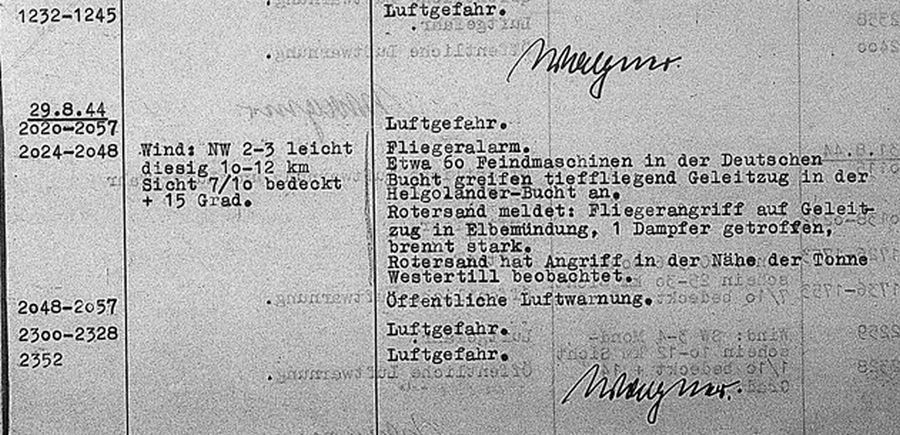
As soon as the war broke out, there were some heavy battles between German and British naval and air forces in the German Bight. While the situation initially favored the Navy and the Air Force, this picture gradually changed in favor of the Royal Navy, the Royal Air Force and their Commonwealth allies. The Royal Navy's naval command set a main goal on mining enemy coastal waters, primarily with parachute magnet mines dropped by air. Over time, this plan (Operation Gardening) was implemented with great success. The German Navy countered this with mine breakers and mine clearing boats, which could detonate mines prematurely with their VES systems. Mine sweepers from the "Mausi" group from Wesermünde also flew their defensive measures. A second goal of the British naval command was to attack German ship convoys. The stretch from Elbe to Hoek van Holland in particular was repeatedly the target of heavy air and speedboat attacks. Initially in small numbers, later in the war up to 40 - 60 fighter planes attacked the ships simultaneously. In addition to torpedoes and on-board weapons, rockets were also used. The efficiency of these air strikes was very high despite strong defensive measures. The fast and agile Bistrol Beaufighter bombers with their 10 on-board cannons in particular caused serious damage to the mostly unarmored ships. A large number of German tonnage was lost or seriously damaged with high personnel losses. In addition, a number of Allied fighter planes were shot down during the fighting, and here too there were high losses of material and human lives. In contrast to the main battle area between the Heligoland Bight and the Netherlands, there were also some sinkings in the section of the Elbe estuary due to mine hits and air raids, but not in such high numbers as there. In the last year of the war, the British forces completely gained the upper hand in terms of mine contamination in the German Bight. Despite major clearance successes on the German side, it was difficult to keep the convoy routes clear. The number of mines constantly being dropped by speedboats and, above all, aircraft was enormous. One of the reasons for this was the lack of air support from German fighters, despite regular requests. These were already fully involved and fully occupied with air defense due to the stream of bombers flying into the Reich. In addition, a lack of fuel and spare parts as well as increasing losses among pilots caused considerable problems. In conclusion, it can be said that thousands of marines and aircraft crews from all participating nations lost their lives in the sea area of the Danish coast, the German Bight and the Dutch coast during the Second World War. Countless ships, boats and aircraft were sent aground by mines and in sea/air battles. The war at sea off our coasts was fought with a frighteningly consistent severity on both sides, something many people are not aware of. Even years after the war, ship crews were killed by sea mines from various warring parties that were not found. The list below shows the cases that have been reported so far from the Cuxhaven/Elbmündung section 1939 - 1945. The actual losses were, however, even higher than previously known. There are other significantly higher numbers of cases of ship losses/aircraft shot down off the North and East Frisian Islands and the estuaries of the Elbe, Jade, Ems and Heligoland Bay.MB
Datum
background
Quelle
01.12.1940
Schiffstyp: Sperrbrecher, Einheit: Sperrbrecherflottille 1, Name: Sperrbrecher 38 / Porjus, Daten: Länge 61,7m x Breite 9,5m, 764 BRT. Untergang nach Kollision auf der Elbe bei Brunsbüttelkoog.
Source:Sperrbrecherflottillen1-8 (wlb-stuttgart.de)
Those: https://www.historisches-marinearchiv.de/projekte/minensucher/ausgabe.php?where_value=3346
09.04.1941
Ship type: tanker, name: Sund. The small tanker Sund sinks after being hit by an aerial mine near Altenbruch Reede.
Which
26.02.1941
Ship type: harbor protection boat, name: HSBoat "Schaumburg Lippe" sinks after collision with mine ship "Cobra" on the Outer Elbe near spar buoy E.
Which
23.05.1941
Schiffstyp: Motorrettungsboot Einheit: DGzRS, Aufsichtsbehörde: O.K.L. / O.K.M.
Name:
August Nebelthau Daten:
Länge 16,2m x Breite 3,8m, 35T. Untergang nach Minentreffer auf
53°57'7"N / 08°40'8" E, außerhalb des Elbfahrwasser.
Source: KTB. North Sea Marine Station
Those: https://www.historisches-marinearchiv.de/projekte/luftwaffen_schiffe/ausgabe.php?where_value=531
08.06.1942
Ship type: Sperrbrecher, name: Sperrbrecher 15 / Taronga, data: length 148m x width 18.7 m, 7003 GRT., sank after being hit by a bomb in the mouth of the Elbe near Scharhörn. She is said to have been subsequently salvaged and towed to Hamburg.
Source:Sperrbrecherflottillen1-8 (wlb-stuttgart.de)
Source:https://www.historisches-marinearchiv.de/projekte/minensucher/ausgabe.php?where_value=3322
19.03.1944
Ship type: Sperrbrecher, Unit: Sperrbrecherflotille 1, Name: Sperrbrecher 163 / Friesland, Ship data: Length 70.1m x 9.5m, 1029 GRT. Wreck position: 53°59'N 8°8'30''E, hit by a mine in the Heligoland Bight, sank in the mouth of the Elbe off Scharhörn. 45 crew members dead.
Source:Sperrbrecherflottillen1-8 (wlb-stuttgart.de)
Source:https://www.historisches-marinearchiv.de/projekte/minensucher/ausgabe.php?where_value=3374
19.03.1944
Ship type: merchant ship, name: Wirpi (Finnish steamer), ship data: length 73m x 10.76m, 1227 GRT. After being hit by a mine, ran aground off the mouth of the Elbe near Scharhörn. Salvage of the ship was abandoned due to bad weather, crew rescued by MRB. Lübeck.
Source: 03.1944-T-1022 R-2133 KTB Commander Security of the North Sea
19.03.1944
Ship type: Outpost boat, Name: Unknown, 4./ HFS / Sinking after mine explosion in the mouth of the Elbe near the steamer Wirpi. Ship sunk
Source: 03.1944-T-1022 R-2133 KTB Commander Security of the North Sea
29.08.1944
Ship type: Sperrbrecher, name: Sperrbrecher 176 / Valeria, sank after air torpedo near Elbe 1.
Source:Sperrbrecherflottillen1-8 (wlb-stuttgart.de)
29.08.1944
Schiffstyp: Sperrbrecher, Name: Sperrbrecher 26 / Mosstrand, Daten: Länge 104,4m x Breite 14,8m, 3549 BRT. Verlust nach Treffer durch 3 Lufttorpedos bei Elbe 1, 4 Tote.
Source:Sperrbrecherflottillen1-8 (wlb-stuttgart.de)
Source:https://www.historisches-marinearchiv.de/projekte/minensucher/ausgabe.php?where_value=3384
15.02.1945
Ship type: Outpost boat, Name: V 1104 ii - PG 471/ Weißenfels, Sinking after being hit by a mine on the Elbe near Osteriff
Source: German Navy outpost boats 1939-45 (wlb-stuttgart.de)
15.02.1945
Ship type: Outpost boat, name: V 1106 v - HC 106/ Newfoundland, sank on the Elbe near Otterndorf after being hit by a mine.
Source: German Navy outpost boats 1939-45 (wlb-stuttgart.de)
21.02.1945
Ship type: minesweeper (ex-pilot steamer), name: Altenbruch, sank after mine detonation on the Elbe near Glameyer Stack. 15 dead, 10 survivors.
Source: German Navy outpost boats 1939-45 (wlb-stuttgart.de)
27.04.1945
Ship type: Sperrbrecher, name: Sperrbrecher 167 / Malmedy, sinks after being hit by a mine on the Elbe off the island of Neuwerk.
Quelle:X
30.04.1945
Ship type: Minesweeper, Name: M 455 sinks after bomb hit near Cuxhaven
Quelle:https://www.wlb-stuttgart.de/seekrieg/45-04.htm
Source 1: Hermann Borrmann (Book - Data on the history of Ritzebüttel/Cuxhaven)Source 3: Harald Schönemann (Book - Naval helper in the Kugelbake battery)Source X:Holger Piening (Book - North Sea coast in the war 1939-42)



